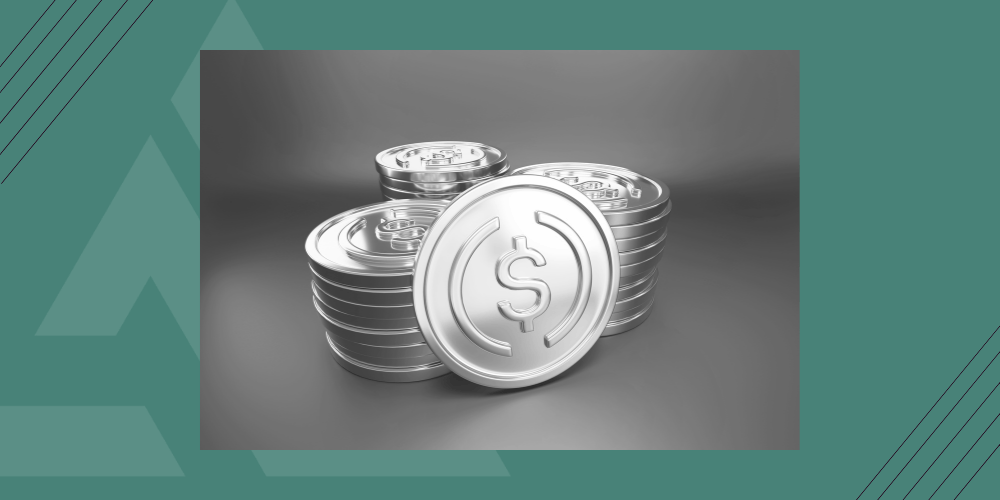Despite the hype, stablecoins still lack the safeguards, oversight, and real-world utility of wire transfers.
There’s no shortage of hype around stablecoins. Every day brings a new headline, a new issuer, and a bold prediction that they’ll soon replace international wire transfers. But before we jump on the bandwagon, let’s take a step back and ask the real question: how stable are stablecoins, really?
As someone who’s worked extensively in financial technology and cross-border payments, I’ve taken a hard look at what stablecoins offer, and what they don’t. Spoiler alert: wires aren’t going anywhere anytime soon. Here’s why.
Why everyone's talking about stablecoins
Stablecoins were designed to solve a big problem in crypto: price volatility. Unlike Bitcoin or Ethereum, which fluctuate with market demand, stablecoins are digital assets pegged to traditional fiat currencies like the U.S. dollar or euro. The idea is simple: you can stay within the digital asset ecosystem without exposing yourself to wild price swings.
For example, say you sell $100 worth of Bitcoin. You don’t want to cash out into dollars yet, but you also don’t want to watch the price drop overnight. Stablecoins give you a parking spot, ideally backed one-to-one by fiat reserves like short-term treasuries or cash equivalents.
What makes a stablecoin stable?
That’s the catch. Stability only works if the issuer truly holds assets to match every coin in circulation. If you’ve got $1 billion in stablecoins out there, you better have $1 billion in liquid, safe, dollar-backed assets. The problem? Most stablecoin issuers operate in lightly regulated or completely unregulated environments.
Sure, some claim to perform audits, but these aren’t always subject to the same scrutiny as traditional financial institutions. And unlike banks, most crypto firms don’t offer FDIC insurance or access to liquidity windows in times of stress.
This leads to my biggest concern: a modern-day bank run, but in the crypto world. What happens if a major stablecoin issuer can’t meet redemptions during a panic? If you can't get your money out, whether due to mismanagement, lack of reserves, or outright fraud, it’s game over.
Stablecoins are fast. But are they useful?
Here’s where stablecoins shine: speed and efficiency. Transferring value wallet-to-wallet can happen in seconds, anywhere in the world, with minimal fees. No correspondent bank, no cutoff times, no delays.
That’s powerful. But it's not the full picture.
You can't (yet) walk into a gas station and pay with a stablecoin. Most businesses and individuals still want, or need, payments in local currency. That means you’ve got to convert those coins, deposit them into a fiat account, and navigate another set of fees and delays. It’s not frictionless.
The promise of faster, cheaper cross-border transactions is real. But the utility today is limited, and the infrastructure just isn’t there yet for day-to-day use.
Why international wire transfers still matter
Traditional wire transfers aren’t perfect, but they’re trusted. When you send a wire, you’re operating within a highly regulated financial ecosystem. There are checks, controls, and recourse options. If something goes wrong, you can reverse or recall a transaction in many cases. That’s not true for stablecoins.
If you accidentally send $10,000 instead of $1,000 in stablecoins, there’s no customer service number to call. It’s gone. If a bad actor gains access to your wallet or an exchange is hacked, that value disappears. Permanently.
Wires also move real fiat currency between real banks. There’s no guesswork about reserves or whether someone’s audited their books. That’s why, despite all the noise, wires remain the gold standard for secure, large-value international transactions.
Yes, wires are slower, but new technology that automates the process alleviates some of the major pain points and helps community financial institutions process international wires safely and profitably.
So, will stablecoins replace international wires?
In a word? No. Not anytime soon.
I think we’ll see gradual adoption of stablecoins for remittances and digital transactions, especially as regulatory frameworks evolve. But there won’t be a sudden flip. Just like checks never fully disappeared, stablecoins will become another way to move money, not the way.
The biggest hurdle is trust. Without oversight, consumer protection, or reliable regulation, stablecoins are still too risky for wide institutional or commercial use. Until we build the same kind of safety net that supports the traditional banking system, wires will continue to offer what stablecoins can’t: stability backed by accountability.
Final Thought:
The danger I see with stablecoins is that they’re potentially the bank run of the future. We need to mitigate that risk before we treat them like they’re money in the bank.
Stablecoins are exciting. But excitement isn’t enough. We need transparency, regulation, and real-world utility before they can earn the same level of trust we place in international wire transfers.
Until then, let’s not confuse speed with safety.
For more on stablecoins regulatory outlook, read our interview with Ethan Singleton, Managing Principal of FS Vector, an advisory firm, for insights from a compliance perspective.
Acceleron builds patented software that allows community banks and credit unions to conduct international payment transactions profitably through a correspondent banking marketplace. Serving over 200 financial institutions and facilitating more than $1 billion in international payments annually, Acceleron helps community financial institutions generate non-interest income and compete more effectively with high-fee big banks. Our solutions integrate seamlessly with top payments platforms, ensuring quick implementation and smooth operation.
Subscribe to our monthly newsletter, "The Exchange," to stay ahead of the curve and get original content you won't find anywhere else!
 Andrew Dillard, Chief Business Officer, Acceleron
Andrew Dillard, Chief Business Officer, Acceleron





